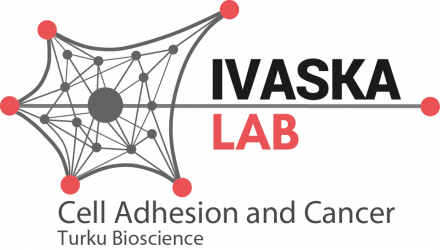Negative regulators of integrin activity by Jeroen Pouwels et al.
J Cell Sci. 2012 Jul 15;125(Pt 14):3271-80. doi: 10.1242/jcs.093641. Epub 2012 Jul 20.
ABSTRACT
Integrins are heterodimeric transmembrane adhesion receptors composed of α- and β-subunits. They are ubiquitously expressed and have key roles in a number of important biological processes, such as development, maintenance of tissue homeostasis and immunological responses. The activity of integrins, which indicates their affinity towards their ligands, is tightly regulated such that signals inside the cell cruicially regulate the switching between active and inactive states. An impaired ability to activate integrins is associated with many human diseases, including bleeding disorders and immune deficiencies, whereas inappropriate integrin activation has been linked to inflammatory disorders and cancer. In recent years, the molecular details of integrin ‘inside-out’ activation have been actively investigated. Binding of cytoplasmic proteins, such as talins and kindlins, to the cytoplasmic tail of β-integrins is widely accepted as being the crucial step in integrin activation. By contrast, much less is known with regard to the counteracting mechanism involved in switching integrins into an inactive conformation. In this Commentary, we aim to discuss the known mechanisms of integrin inactivation and the molecules involved.
PMID:22822081 | DOI:10.1242/jcs.093641
